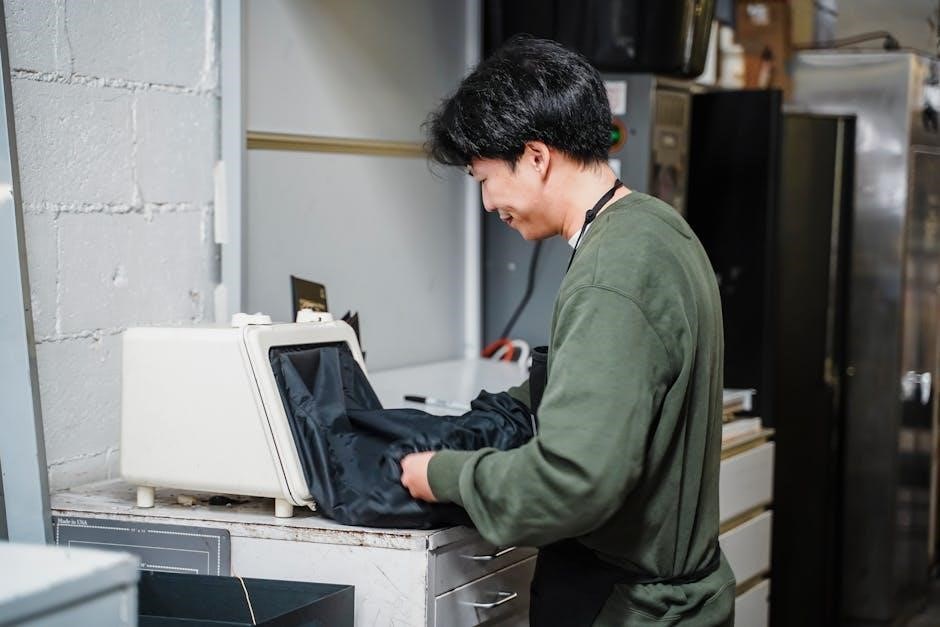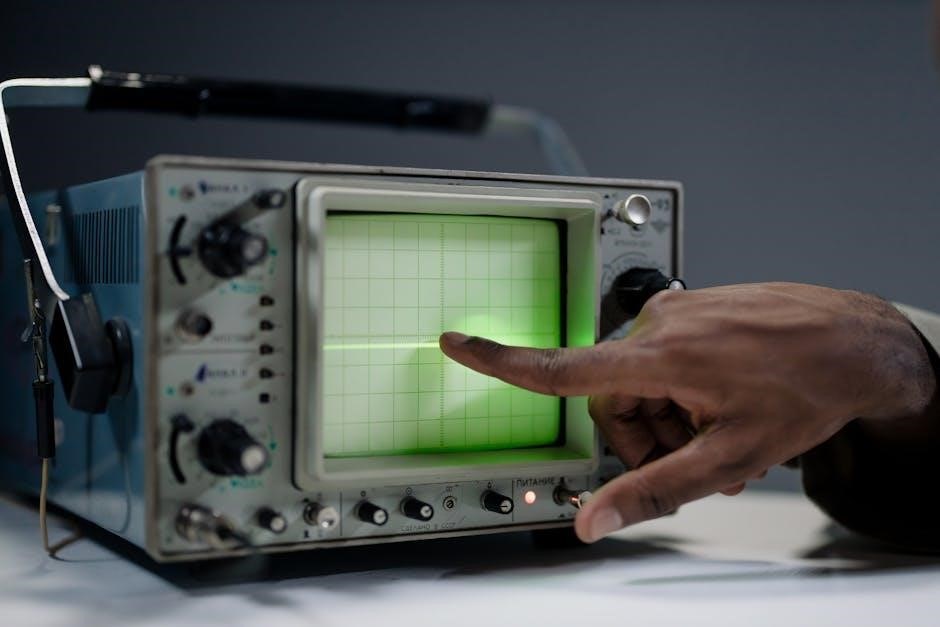What is Biological Anthropology?
Biological anthropology explores human and non-human primates’ evolution, genetics, and behavior․ This field combines laboratory and fieldwork to understand human diversity and adaptability across time and environments․
This workbook provides hands-on exercises to engage with key concepts, fostering critical thinking and scientific inquiry in biological anthropology․

Biological anthropology is the study of humans and non-human primates, focusing on evolution, genetics, behavior, and adaptation․ It examines the biological and cultural aspects of human diversity, both past and present․
This field integrates knowledge from biology, genetics, and ecology to understand how humans and primates have evolved over time․ By analyzing fossils, DNA, and skeletal remains, biological anthropologists reconstruct evolutionary histories and explore human variation․
Laboratory and fieldwork are central to this discipline, enabling researchers to collect and analyze data․ This workbook provides practical exercises to engage with key concepts, fostering a deeper understanding of biological anthropology through hands-on learning․
Through these activities, students develop critical thinking and scientific skills, preparing them to address complex questions in human evolution and diversity․
Importance of Laboratory Work
Laboratory work is essential in biological anthropology, providing hands-on experience with scientific methods and tools․ It allows students to apply theoretical concepts to real-world scenarios, enhancing understanding of human evolution, genetics, and anatomy․
Laboratories enable the analysis of biological samples, such as DNA and skeletal remains, fostering skills in data collection, measurement, and interpretation․ These practical exercises bridge the gap between classroom learning and fieldwork, preparing students for research and professional roles․
Through lab activities, students develop critical thinking, problem-solving, and collaboration skills․ This workbook offers structured exercises to guide learners in mastering techniques and interpreting results, ensuring a comprehensive education in biological anthropology․
Lab work also encourages scientific literacy and the application of ethical standards, crucial for advancing knowledge in this dynamic field․
Structure and Organization of the Workbook
This workbook is designed to complement coursework in biological anthropology, offering a structured approach to learning through hands-on exercises and critical thinking activities․ Each chapter aligns with key topics in the field, such as genetics, osteology, and primatology, providing a comprehensive exploration of biological anthropology․
Laboratory exercises are divided into clear sections, each with specific objectives, materials, and step-by-step instructions․ This organization ensures that students can easily follow along and apply their knowledge in a practical setting․ The workbook also includes review questions and case studies to reinforce learning and encourage independent study․
Additional resources, such as diagrams, tables, and reference charts, are integrated throughout to aid in understanding complex concepts․ The workbook’s flexible design allows instructors to tailor activities to their course goals, making it a valuable tool for both students and educators in biological anthropology․
The structured format ensures that students develop a strong foundation in both theoretical knowledge and practical skills, preparing them for advanced studies and professional applications in the field․

Laboratory Exercises in Biological Anthropology
Laboratory exercises provide hands-on opportunities to analyze biological data, conduct experiments, and apply theoretical concepts․ These activities develop practical skills and reinforce understanding of key principles in biological anthropology․
Genetics and DNA Analysis
Genetics and DNA analysis are central to understanding human evolution, diversity, and adaptation․ This section explores the structure and function of DNA, genetic inheritance, and modern techniques like PCR and sequencing․
Through hands-on exercises, students analyze genetic data, trace ancestry, and study evolutionary relationships․ Practical labs include DNA extraction, gel electrophoresis, and interpreting genetic markers to address anthropological questions․
Osteology and Skeletal Analysis
Osteology and skeletal analysis are fundamental to biological anthropology, focusing on the study of bones to understand human and non-human primate anatomy, evolution, and behavior․
Laboratory exercises include identifying and analyzing skeletal remains to determine age, sex, ancestry, and stature․ Students learn to recognize bone structure, pathological conditions, and trauma patterns․
Practical activities involve measuring skeletal elements, reconstructing fragments, and interpreting fossil evidence․ These skills are essential for forensic anthropology and understanding evolutionary adaptations․
Forensic Anthropology
Forensic anthropology applies biological anthropology principles to aid in legal investigations, focusing on the analysis of human remains to assist in identification and cause of death determination․
Laboratory exercises in forensic anthropology involve skeletal analysis, trauma assessment, and reconstructing biological profiles (age, sex, ancestry, stature)․ These skills are critical for piecing together fragmented remains and interpreting mortality patterns․
Through hands-on activities, students learn to identify signs of trauma, pathology, and taphonomic changes․ This practical training prepares them to contribute to real-world forensic cases, bridging anthropology with criminal justice systems․
Primatology and Primate Behavior
Primatology, a core area of biological anthropology, examines the behavior, evolution, and biology of non-human primates, offering insights into human origins and social structures․
Laboratory exercises focus on observing primate behavior, analyzing locomotion patterns, and studying dietary adaptations․ Students engage in case studies of species like chimpanzees and gorillas to understand their ecological roles․
Hands-on activities include reconstructing primate phylogenies and comparing skeletal anatomy to identify evolutionary trends․ These exercises highlight the importance of primatology in conservation biology and our understanding of human evolution․

Human Evolution and Taxonomy
Human evolution and taxonomy explore our species’ developmental journey, tracing the fossil record and evolutionary timeline․ This section forms the foundation of biological anthropology, examining how humans adapt and diversify․
The workbook includes exercises and case studies to deepen understanding of these processes․
Fossil Record and Evolutionary Timeline
The fossil record provides critical evidence for understanding human evolution, offering insights into the timeline of species development․ This section of the workbook guides students through analyzing fossils, tracing hominin evolution, and interpreting evolutionary relationships․
Exercises include mapping the geological time scale, identifying key fossil specimens, and exploring adaptations that shaped human evolution․ Practical activities help students visualize the transition from early hominins to modern humans․
By engaging with real-world data and case studies, learners gain hands-on experience in reconstructing evolutionary histories and understanding the biological and environmental factors that influenced human diversity over millions of years․
Taxonomy and Classification of Humans
Taxonomy is the scientific system for classifying living organisms, and understanding human taxonomy is fundamental in biological anthropology․ This section explores how humans fit into the biological hierarchy, from domain to species․
Through exercises, students learn to classify humans within the taxonomic ranks: Eukarya, Animalia, Chordata, Mammalia, Primates, Hominidae, Homo, and Homo sapiens․ Activities include identifying key characteristics that define each group and understanding the evolutionary relationships between humans and other primates․
Practical labs involve creating phylogenetic trees and analyzing morphological traits to better grasp the classification process․ This workbook section emphasizes the importance of taxonomy in studying human evolution and diversity, providing a foundational framework for advanced topics in biological anthropology․
Comparative Anatomy
Comparative anatomy is a cornerstone of biological anthropology, focusing on the study of similarities and differences in the physical structures of organisms; This section of the workbook guides students in analyzing the anatomical features of humans and other primates, such as bone structure, muscle attachments, and dental morphology․

Through hands-on exercises, students compare fossil specimens and modern species to explore evolutionary relationships․ Activities include identifying homologous structures, such as the human arm and bat wing, to understand shared ancestry and functional adaptations․
These comparative analyses enhance understanding of human biology and evolution, preparing students to address complex questions in biological anthropology․ The workbook emphasizes the importance of anatomical variation in reconstructing evolutionary histories and interpreting the fossil record․

Data Collection and Analysis
Data collection and analysis are fundamental in biological anthropology, involving methodologies like morphometric analysis, genetic sampling, and statistical tools to interpret biological and evolutionary data accurately․
Scientific Method and Research Design
The scientific method is a cornerstone of biological anthropology, guiding researchers through systematic observation, hypothesis testing, and evidence-based conclusions․ This workbook emphasizes the importance of clear research design, ensuring studies are replicable and rigorous․ Through hands-on exercises, students learn to formulate hypotheses, collect and analyze data, and interpret results critically․ Practical applications include designing experiments to study human variation or primate behavior, teaching the ethical considerations in biological research․ The workbook also explores statistical tools and data visualization techniques, equipping students with the skills to communicate findings effectively․ By engaging with real-world scenarios, learners develop a deeper understanding of the scientific process and its application in advancing our knowledge of human evolution and diversity․
Data Collection Techniques
Data collection is a critical step in biological anthropology, requiring precision and consistency to ensure reliable results․ This workbook provides exercises to master various techniques, such as measuring skeletal remains, analyzing genetic samples, and observing primate behavior․ Students learn to use tools like calipers, osteometric boards, and software for data analysis․ Fieldwork exercises emphasize systematic observation and recording of data, while laboratory sessions focus on accurate measurement and documentation․ The workbook also covers ethical considerations in data collection, such as working with human remains or living subjects․ By practicing these methods, students develop the skills to design robust studies and collect high-quality data, essential for advancing research in biological anthropology․
Statistical Analysis in Anthropology
Statistical analysis is a cornerstone of biological anthropology, enabling researchers to interpret data and draw meaningful conclusions․ This workbook provides exercises to master statistical techniques, such as regression, ANOVA, and non-parametric tests, using tools like Excel and R․ Students learn to apply these methods to analyze datasets, including skeletal measurements, genetic data, and behavioral observations․ Practical exercises focus on hypothesis testing, data visualization, and interpreting results in anthropological contexts․ The workbook also addresses common challenges, such as small sample sizes and missing data, often encountered in field and laboratory settings․ By practicing statistical analysis, students gain the ability to critically evaluate evidence and contribute to ongoing research in biological anthropology․

Anthropological Research Methods
Lab manuals and workbooks in biological anthropology emphasize combining fieldwork and laboratory exercises, fostering hands-on experience in data collection, analysis, and interpretation․ These exercises develop essential research skills, preparing students to apply anthropological methods to real-world problems․
Ethnographic Studies
Ethnographic studies involve immersive fieldwork to understand human behavior, culture, and social dynamics within specific contexts․ This method is integral to biological anthropology, as it provides insights into how environmental, genetic, and cultural factors shape human diversity․ Lab manuals often include exercises that simulate ethnographic data collection, such as participant observation, interviews, and surveys․ These activities help students develop the skills to analyze human behavior and interpret cultural practices․ Ethnographic studies are particularly valuable for understanding primate behavior, offering parallels to human social structures․ By engaging with these methods, students gain hands-on experience in applying anthropological principles to real-world scenarios, fostering a deeper understanding of human evolution and adaptation․
Experimental Design in Anthropology
Experimental design in anthropology involves creating controlled studies to test hypotheses about human behavior, biology, and culture․ This method allows researchers to isolate variables and observe their effects, providing insights into evolutionary processes and behavioral patterns․ In a lab manual, exercises might include designing experiments, collecting data, and analyzing results to address anthropological questions․ For example, students might conduct experiments on decision-making or problem-solving to understand cognitive evolution․ These activities emphasize the importance of replication and validation in scientific research․ Experimental design complements ethnographic and observational methods, offering a structured approach to understanding complex anthropological phenomena․ By engaging with these exercises, students develop critical thinking skills and a deeper appreciation for the scientific method in anthropology․
Survey and Questionnaire Design
Survey and questionnaire design are essential tools in anthropological research for collecting data on human behavior, cultural practices, and biological traits․ These methods allow researchers to gather standardized information from a large number of participants, making it easier to identify patterns and trends․ In a lab manual, exercises might focus on crafting effective questions, designing survey instruments, and pilot-testing questionnaires to ensure clarity and reliability․ Surveys can be used to study topics such as dietary habits, health practices, or cultural beliefs, providing valuable insights into human diversity and adaptation․ Unlike ethnographic studies, which are more qualitative, surveys offer a quantitative approach to data collection․ However, careful consideration must be given to ensuring questions are culturally appropriate and free from bias to avoid skewed results․ This method is particularly useful in large-scale studies and for comparing data across populations․

Biological Anthropology in Practice
Biological anthropology applies to medicine, public health, and conservation, offering insights into human evolution, disease patterns, and ecological interactions․ Lab manuals provide practical exercises to explore these real-world applications․
Applications in Medicine and Public Health

Biological anthropology significantly contributes to medicine and public health by applying evolutionary principles to understand disease patterns and human variation․ Through genetic and osteological analyses, anthropologists identify predispositions to conditions like osteoporosis, informing targeted treatments․ Primatology offers insights into disease transmission among primates, aiding in public health strategies․ These applications enable the development of personalized medicine and preventive measures, enhancing overall human well-being․
Forensic anthropology applies biological anthropology principles to aid in legal investigations, particularly in identifying and analyzing human remains․ Through osteological analysis, anthropologists determine age, sex, ancestry, and stature, while also assessing skeletal trauma or pathology․ This expertise is crucial in criminal investigations and disaster recovery scenarios․ Advanced techniques, such as DNA analysis and 3D reconstruction, complement traditional methods․ The integration of genetics and osteology enhances the accuracy of identifications, making forensic anthropology indispensable in solving crimes and addressing human rights issues․ This field bridges science and justice, providing critical insights that support legal processes and bring closure to families․
Conservation Biology and Ecology
Conservation biology and ecology focus on understanding and preserving biodiversity, studying interactions between organisms and their environments․ Biological anthropologists contribute by examining human impacts on ecosystems and primate habitats․ Through field and lab exercises, students analyze ecological data, such as population dynamics and habitat restoration․ These studies inform conservation strategies, addressing deforestation, climate change, and species extinction․ Practical applications include developing sustainable practices and protecting endangered species․ This field bridges anthropology with environmental science, emphasizing the role of humans in shaping ecosystems․ By integrating ecological principles with anthropological insights, conservation efforts become more effective in safeguarding biodiversity for future generations․

Advanced Topics in Biological Anthropology
Advanced topics in biological anthropology delve into specialized areas like bioarchaeology, molecular anthropology, and human variation․ These studies utilize cutting-edge techniques to explore complex evolutionary and adaptational processes in depth․
Bioarchaeology
Bioarchaeology is the study of human remains from archaeological contexts, combining anthropology, osteology, and archaeology․ It examines skeletal and dental evidence to reconstruct past human lives, including health, diet, and mortuary practices․
Lab exercises in bioarchaeology involve analyzing skeletal remains to assess age, sex, and ancestry, as well as identifying signs of disease or trauma․ Students learn to apply osteological methods and interpret data within cultural and historical frameworks․
Case studies and hands-on activities provide practical experience in bioarchaeological analysis, enabling students to explore the intersection of biology, culture, and history․ This approach fosters a deeper understanding of human adaptation and evolution over time․
Human Variation and Adaptation
Human variation and adaptation are central to understanding how populations have evolved in response to environmental, cultural, and biological factors․ This section explores the genetic and physiological mechanisms that enable humans to thrive in diverse ecosystems․
Lab exercises focus on analyzing human adaptability, such as high-altitude adaptation, skin pigmentation, and dietary specializations․ Students examine case studies and data to identify patterns of human variation and their evolutionary significance․
Practical activities include measuring physiological traits and interpreting genetic data to understand how humans have adapted to different environments․ These exercises provide hands-on insights into the biological and cultural factors shaping human diversity․
By studying human variation and adaptation, students gain a deeper understanding of the complex interplay between biology, environment, and culture in shaping the human species․
Molecular Anthropology
Molecular anthropology examines the genetic basis of human evolution, behavior, and disease․ This field integrates molecular biology, genetics, and evolutionary theory to study human diversity and origins․
Laboratory exercises include analyzing DNA sequences, identifying genetic markers, and reconstructing evolutionary relationships․ Students learn techniques like PCR, sequencing, and phylogenetic analysis to explore human migration and adaptation․
Key topics covered are mitochondrial DNA, Y-chromosome studies, and ancient DNA analysis․ These methods provide insights into human population dynamics and evolutionary history․
Practical activities emphasize interpreting genetic data to address questions about human origins, migration patterns, and disease susceptibility․ This section bridges molecular biology with anthropological inquiry, offering a comprehensive understanding of human evolution at the genetic level․
This workbook equips students with essential skills to explore biological anthropology through hands-on learning․ Future advancements in molecular biology and genetics promise new insights into human evolution and diversity․
Career Opportunities in Biological Anthropology
Biological anthropology offers diverse career paths, including roles in forensic science, genetics, primatology, and bioarchaeology․ Professionals can work in academia, research institutions, or government agencies, addressing global health challenges and conservation efforts․ The field also intersects with medicine, public health, and environmental science, providing opportunities for applied research․ Many biological anthropologists pursue careers in museums, cultural resource management, or policy-making, leveraging their expertise in human evolution and diversity․ This workbook prepares students for these careers by enhancing critical thinking and practical skills in laboratory and field settings․ With a strong foundation in biological anthropology, graduates can contribute to advancing our understanding of human origins and addressing contemporary societal issues․